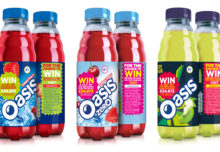 Amtek, a leading Italian manufacturer of self-service vending machines has doubled its capacity by switching to a user interface based on a Zytronic projected capacitive touch sensor.
Amtek, a leading Italian manufacturer of self-service vending machines has doubled its capacity by switching to a user interface based on a Zytronic projected capacitive touch sensor.
The new electronic vending machines can also hold a much wider range of product, and deliver detailed sales reports in real time allowing stock to be tuned to local demand.
Matteo Ruggieri, owner and CEO at Amtek, decided to investigate the use of touch screens, to save space and make the machines more attractive and easier to use.
He said: “A major challenge was security. Unsupervised vending machines are very attractive targets to attack, to steal both the money and the product. A traditional all-metal machine can be made secure against attack – but we were concerned about the level of protection available in a machine with a glass front.”
Patrice Romano of Camax recommended Zytronic 21.5in touch sensor, operating through an overlaying toughened 8mm thick vandal resistant cover glass that provides a considerable barrier to any would-be attacker. As a result, Amtek was able to create a 1m high, small footprint vending machine, which is also able to stock a range of 14 different products.
The digital user interface gave other advantages too. The machine is now able to monitor sales and manage stock levels. It can report back in real time the demand for specific products in specific locations at specific times. Furthermore, the additional capacity of the new vending machines also mean that they need restocking less frequently. Camax worked with Zytronic to design the customised touch sensors and integrates them with the industrial-grade monitors and anti-vandal protective cover glass before supplying to Amtek.
Mr Ruggieri added: “The new touch screen vending machines can comfortably hold one or two month’s stock, greatly reducing costly visits from a technician for replenishment. They also report when stock levels are getting low, virtually eliminating the risk of loss of sales through lack of stock.”



